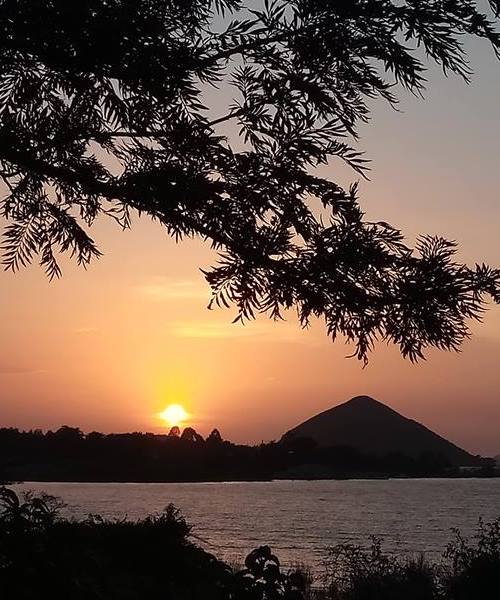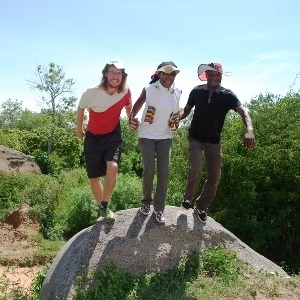Luxury Travel in Western Kenya
What do you have in mind whenever you hear the luxury travel in Western Kenya? Well, at Oluokos Signature, we take you on exclusive and extraordinary journeys only. These come with a very well imaginative degree of discovery through some of the least known parts of Kenya, hence Western Kenya.
Oluokos private luxury safari experiences will blow your mind away as it’s in Western Kenya where the Lake Victoria kisses the beach and hugs the horizon while at the same time dancing with the rising or the setting sun… We assure you that you’ll experience both the bush, the city, the villages and the African sky under the guidance of our highly professional team of designers from the back of our office to our field personnel.
Nothing beats the comfort and stability of our 4×4 Toyota Land Cruisers as you cruise and tread carefully in our hand-picked Western Kenya destinations by the day and rejuvenate at some of the most spectacular city hotels, lodges and camps by night. Having the freedom to flex your itinerary, you’ll have the ability to enjoy the solitude, vastness and charm of the Western Kenyan magic where with every sun set heralds another chapter in the world of luxury. Come let’s explore the beauty of Western Kenya.
The Experience
As per every traditional safari, during the day, you will be out, in search of the Africa’s wildlife and having encounters with local communities or even sampling what the local cities have to offer to your ever-curious minds. Combining the city, bush, beach and cultural experiences is our magical secret. This comes after a lot of planning that sometimes spans for even 2 years in advance!
Whenever you are ready to come to Africa, we can convince you that it will never be easy to say now Africa for the second time and possibly many more times. Every guest who have booked with us will mention this experience repeatedly. From the moment you step to Kenya and begin your safari, you’ll be returning to your well-appointed lodge or tented camp to relax and unwind for the best romantic night.
You’ll be spoilt during your holiday by our listening caring selected team of suppliers where it’s not only about the quality of your sound full night or meticulously done gourmet but also the affectionate smile that accompanies every service provider that will directly or indirectly be in touch with you.
Accommodation
Kenya – Considered the origin of safari, it’s one of those African destinations that still awakens up a sense of romantic imagination. You’ll certainly find your Out of Africa moment at the variety of luxury accommodation in Kenya and Western Kenya isn’t an exception to this.
Western Kenya is mostly renowned for an African safari with some charming accommodation facilities on the Islands of Rusinga, Takawiri and Mfangano. Historically, these facilities have been best known for the Great Migration and the Masai Mara National Reserve where it was the norm and still, they remain attractive enough for the Lake Victoria fishing expedition for a few days after the Masai Mara.
Deciding on a place to stay when embarking on your luxury safari in Wester Kenya is almost as important as the national park, game sanctuaries or game reserve that you’ll be visiting. Our expert experience designers will be more than happy to simply things. We will share with you properties that we’ve selected in the best spots for your luxury accommodation in Western Kenya.
Based on our experience, your accommodation will be either within or close to the borders of the national parks, wildlife reserves, and forests, on the beach or at the riverfronts. Here, yet another luxurious experience awaits you. When this is your option, you can expect wellness treatment at the spa, a nice spirit at the bar. Alternatively, you can choose to be tucked away in the privacy of your wilderness-facing terrace as you feast your eyes across the endless savannah.
Treat yourself to a relaxing wellness experience after a day out in the bush, cool down in the pool or join other guests for a sundowner at the bar. Enjoy a delicious dinner while the animals around you retreat for the night and the sounds of the nocturnal bush grow louder.
Whatever your choice, you’ll be surprised by the delicacies the hotels, camps or lodges’ chefs will come up with for your dinner experience. When the night comes, fall asleep to the humbling sounds of the night, while you dream of your African experiences that awaits you on your next day.
Astounding Choices
Warm and ever-smiling tribes, tantalizing sunups and mind-blowing sundowns, charming cultural experiences, vibrancy in landscapes, unusual and rare wildlife, fantastic inland beaches one extensive the lakeshores and Kenya’s only rainforests is the best definition to the fascinating Western Kenya Tourist Circuit.
The slow-paced way of life, swaying trees in the virgin forests, the breezy winds, cheeping of birds winding on the landscapes down to the waves of splashing, calm waters on the lakeshores is indeed the gem of Western Kenya.
But there’s much more to western Kenya than these plains of herbivores and carnivores. The dense forests of Kakamega are buzzing with weird and wonderful creatures, the rain-soaked hills of Kericho and their verdant tea gardens bring new meaning to the word ‘green’, and amid the boat-speckled waters of Lake Victoria lies a smattering of seldom-visited islands crying out for exploration.
Western Kenya is an area of great geographic, cultural and natural diversity, offering tourists just as much, if not more, than many of Kenya’s better known tourist areas.
Most travelers dream of finding a new and unknown destination, somewhere far from the beaten tourist path, where the thrill of real discovery and exploration reward the visitor with new and unexpected experiences, sights and sounds. Kenya’s western region offers the above mentioned, and much more.
Comprising 11 counties, namely Kisumu, Siaya, Homabay, Migori, Kisii, Nyamira, Kakamega, Vihiga, Bungoma, Busia and Trans-Nzoia western Kenya has so much more on to see and do. The region’s flourishing physical features range from lakes, forested areas, mountains, hills, waterfalls and a chain of rivers. From Kenya’s second highest peak of Mount Elgon to the lowland basin of Lake Victoria.
The main occupation agriculture and this is interspersed with various tourist attractions. The climate is hot and tropical humid with abundance of sunlight and availability of rainfall throughout the year. Kenya’s Western Tourist Circuit is among the most accessible with an international airport, airstrips and good roads that link the region not only with rest of the country but also with Tanzania, Rwanda and Uganda.
For many would be travelers, the precious reason to visit western Kenya is summed up in two very popular words: Masai Mara. Without any arguments, few places on earth support such high concentrations of wildlife, and the Mara’s wildebeest-dotted savannahs, where drama unfolds on a daily basis both on the ground and in air, are undeniably the region’s magnetic attraction. While in Kenya, don’t miss to explore western Kenya tourist attractions with Oluokos Signature.
Culture, Beaches and Wildlife
Unforgettably, a journey through Western Kenya is where you’ll discover a fascinating mosaic of sceneries, culture and nature. Upon landing in Kenya’s only city of Kisumu, you’ll be mesmerized by its calm city with very friendly residents. The city magnificently hug the shores of the world’s second largest water body, Lake Victoria taking a boat ride on the lake to explore the lakes flora and fauna and meeting the local community is worth your time.
Apart from the city tour, an exploration to the Kit Mikayi rock an important spiritual and cultural shrine for the Luo people is highly recommended. Crossing the equator will take you to the Kakamega Forest the rainforest that is home to a diverse range of wildlife, including over 430 species of birds and several primate species. An informative guided nature walk in the pristine forest will allow you to discover its butterflies, reptiles, waterfalls, streams, and towering indigenous trees.
To those who are yearning for the local cultural experience, a visit the Nabongo Mumia Cultural Centre will enable you to learn about the Bukusu people’s history and traditions, participate in traditional dances, and much more.
Western Kenya has so much to offer and but we must all agree that your trip to Western Kenya is incomplete without a visit to the Masai Mara National Reserve. If you’re in the country during the months of July to October, don’t miss to witness the incredible wildebeest migration, where millions of wildebeest cross the Mara River in search of pasture and water. While in Western Kenya, you can choose to even head to Uganda and Rwanda for the River Nile and the Gorillas before coming back to Kenya and then proceed to Tanzania or Zanzibar.
When to Go
Considered as best safari gem of East Africa, Kenya does get busy. This means, it can pay to be a little sassy with your visiting moments. To be precise, July to October dry season is considered the best time to visit most parts of Kenya, but August and September in particular are always extremely busy, especially in the Masai Mara as the herds of the Great Migration cross the Mara River.
Alternatively, consider a visit in October or November before the short rains begin for a quieter, more exclusive safari experiences, or around Christmas and into January and February. This is normally before the long rains start in March and the days are clear, sunny and warm with excellent hunter and the hunted wildlife viewing all over the country.
For those who are keen to visit Kenya’s high altitudes, it may rain at almost any time. Western Kenya, including the Masai Mara, has a scattered rainfall pattern influenced by Lake Victoria.






